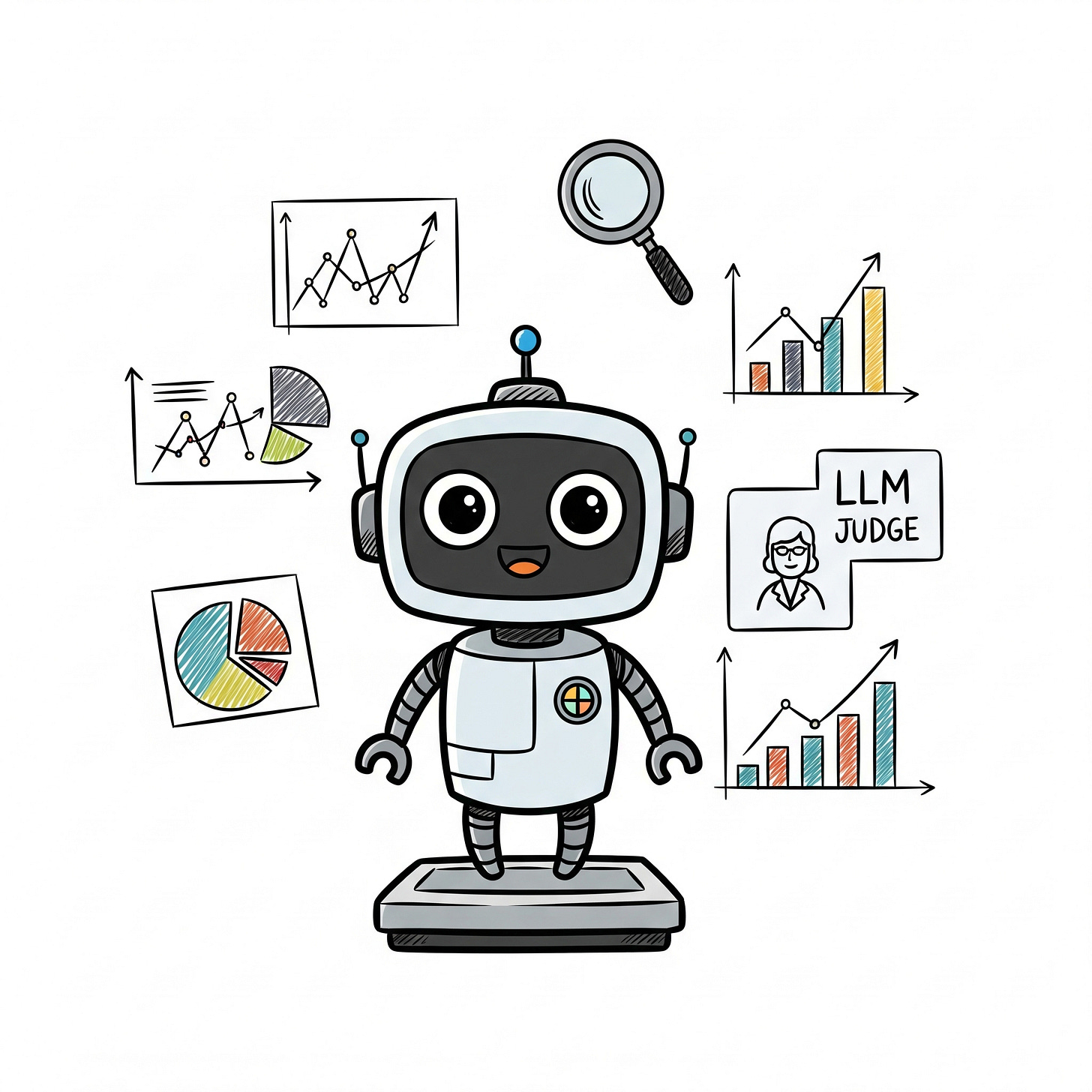Summary: Measuring Success and Making Agents Better
In Part 6, we tackle the crucial question: how do you actually know if your AI agent is performing well? This section dives into the world of agent evaluation, explaining why it's so important to measure their effectiveness. We’ll look at practical methodologies, key metrics to track, and even discuss how to use an LLM as a "judge." Understanding evaluation is key to identifying areas for improvement and ensuring your agents truly deliver value.
How Do We Know It's Working? – Evaluating AI Agents
Alright, agent enthusiasts! We've journeyed through understanding what AI agents are, how to build their brains and hands, orchestrate their intelligence, and even put safety guardrails in place. That’s a whole lot of progress! But here’s the thing: how do you actually know if your super-smart agent is, well, super? You can’t just hope for the best, right? This is where evaluation swoops in—it’s how we measure success and figure out how to make our agents even better.
Why Bother with Evaluation? The Proof is in the Performance!
Imagine launching a new product without ever testing it or getting customer feedback. Sounds a bit risky, doesn't it? The same goes for AI agents. Evaluation isn't just a fancy term for testing; it's fundamental to building agents that are reliable, effective, and actually solve the problems they were designed for.
Here’s why it's so critical:
Trust and Reliability: You need to know your agent performs consistently and accurately, especially in critical applications.
Identify Weaknesses: Evaluation helps you pinpoint exactly where your agent might be struggling—is it reasoning, tool use, or understanding instructions?
Iterative Improvement: It provides data-driven insights to refine your agent's design, prompts, and tool integrations. You can’t improve what you don’t measure!
Business Value: Ultimately, you need to prove that the agent is delivering on its promise, whether that’s saving time, reducing costs, or improving customer satisfaction.
Honestly, skipping evaluation is like trying to navigate a dark room without a flashlight. You might bump into some things!
How Do We Actually Evaluate Agents? Practical Methodologies
So, how do we put our agents through their paces? It's not always as simple as a pass/fail. Agents perform complex, multi-step tasks, so our evaluation needs to be equally sophisticated.
One common approach involves step-by-step evaluation. Instead of just looking at the final output, you inspect each step an agent takes in its reasoning process. Did it choose the right tool? Did it extract the correct information? Did its internal "thought" process make sense? This is especially useful during development, almost like debugging a human's thought process.
Another fascinating method involves using an LLM as a "judge." Yes, you read that right! You can leverage a powerful LLM (one different from the agent's core model) to evaluate your agent's performance. You feed the LLM the task, the agent's actions, and the final output, and ask it to rate the agent's effectiveness, accuracy, and adherence to instructions. This can be surprisingly effective for qualitative assessments and for scaling evaluations when human review isn't feasible for every single run. It's like having an unbiased, super-smart robot critic!
Key Metrics: What Are We Even Measuring?
When evaluating agents, you'll want to look at a mix of metrics. Think of them as different lenses through which to view your agent's performance:
Task Completion Rate: This is probably the most straightforward: What percentage of tasks did the agent successfully complete without human intervention? It's the ultimate "did it do the job?" metric.
Quality Control (Accuracy & Relevance): Beyond just completing a task, did the agent do it well? Was the information accurate? Were the responses relevant? This often requires a human or an LLM judge for qualitative assessment. For example, if the agent summarizes a document, is the summary accurate and does it capture the main points?
Tool Interaction Metrics: How well is the agent using its tools?
Tool Selection Accuracy: Did it choose the right tool for the job?
Successful Tool Calls: How often did its tool calls actually work without errors?
Steps per Task: How many steps (including tool calls and internal thoughts) did it take to complete a task? Fewer steps often mean more efficiency!
System Metrics: These are more about the "under the hood" performance.
Latency: How long does it take the agent to complete a task? Speed matters!
Cost: How much does it cost in terms of API calls (tokens) or computational resources? Efficient agents save money.
Learning from the Trenches: Improving Agent Performance
Evaluation isn't just about finding problems; it's about making things better. When you discover an agent isn't performing as expected, you can use those insights to improve it:
Refine Instructions: Often, a subtle tweak in your agent's prompt or instructions can make a huge difference in its behavior.
Enhance Tool Descriptions: Make sure your tools are clearly described and that the agent understands their capabilities and limitations.
Add More Guardrails: If you're seeing consistent safety issues or misuse of tools, you might need stronger filters or more human intervention points.
Iterate on Architectures: Sometimes, a different workflow (like switching from simple LLM-enhanced to ReAct, or adding RAG) can dramatically improve performance for complex tasks.
It's an ongoing cycle of build, evaluate, learn, and refine.
Conclusion: The Unsung Hero of Agent Development
Evaluation truly is the unsung hero of AI agent development. It transforms agent building from guesswork into a data-driven process, ensuring you create intelligent systems that are not only powerful but also trustworthy and consistently effective. By mastering evaluation, you gain the confidence to deploy agents that genuinely deliver on their promise.
As we move to our final part, Part 7, we'll discuss how to actually get these amazing agents out into the real world and ensure they continue to perform brilliantly. We'll cover practical deployment strategies and continuous improvement in production environments. See you there!


